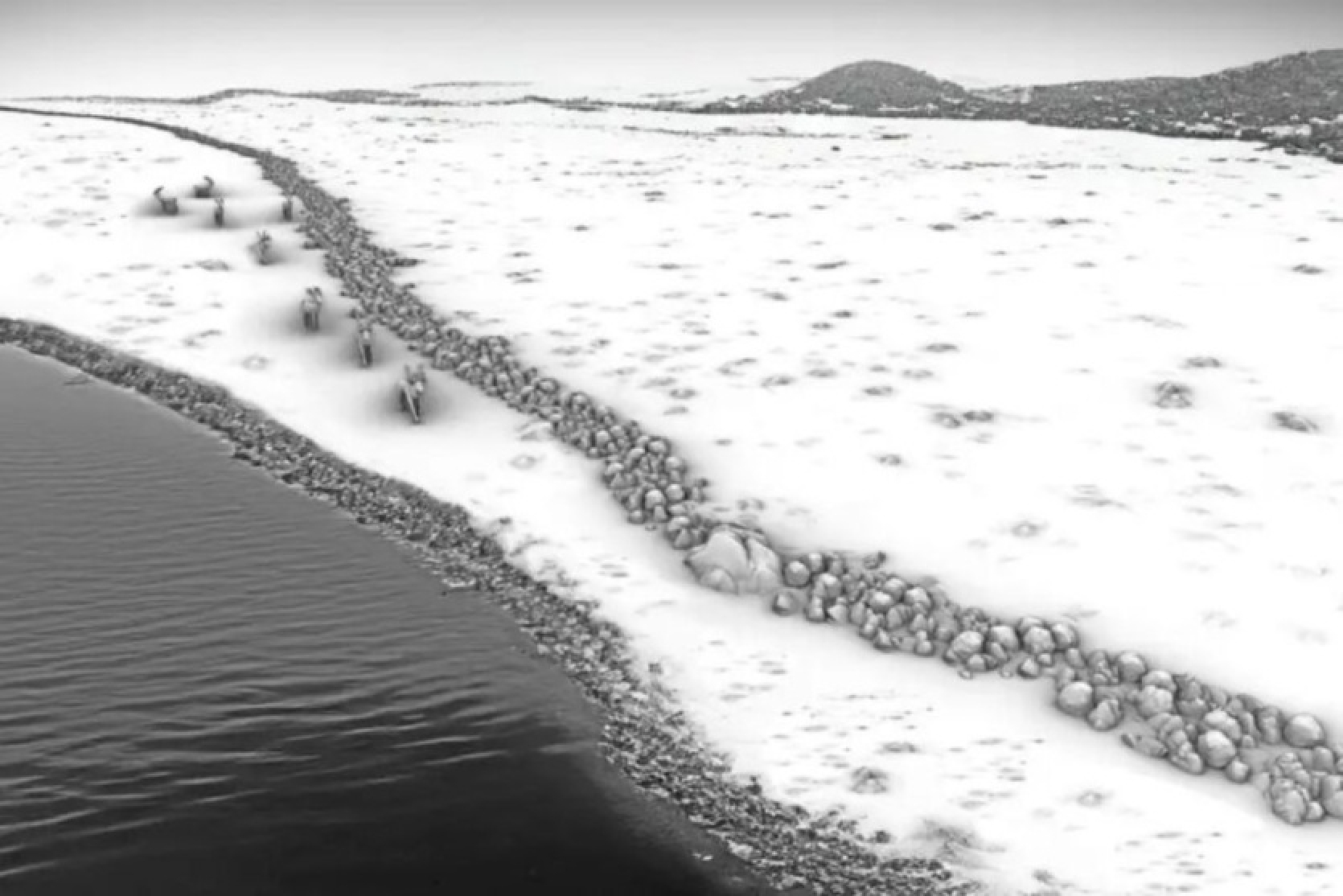A kilometer-long giant stone wall was probably built 11,000 years ago and used for hunting deer.
In 2021, Jakob Giersen, a geophysicist from the Leibniz Institute for Baltic Sea Research, took his students for training to the coast of the Baltic Sea. The group used a multi-beam hydrographic system to map the seabed about 10 km from the shore. Subsequently, during the analysis of the images in the laboratory, Giersen noticed a strange structure that appeared to be artificially created.
Further research showed that a structure similar to the wall was built by humans 11,000 years ago and was used for hunting deer (in fact, the herd was driven into a dead end in this way).
According to an article published in the Proceedings of the National Academy of Sciences, the wall was called "Blinkerwall" — and is likely the oldest megastructure in Europe.
As early as the 1920s, aerial photographs showed the presence of large megastructures in the form of stone walls in the deserts of Asia and the Middle East, which, according to most archaeologists, were used for corralling and capturing wild animals. As of 2018, more than 6000 similar structures have been identified, although only some have been excavated.
According to Giersen, such megastructures are almost unknown in Europe because they simply did not survive the subsequent millennia. Although the basins of the Baltic Sea, which include the Mecklenburg Bay where the geophysicist made his important discovery, are known to contain a dense population of submerged archaeological sites, which are extremely well preserved.
In 3D images taken shortly after the find, a neat row of stones forming a wall less than 1 meter high is visible. A dozen large boulders weighing several tons are arranged at certain intervals and connected by about 1600 smaller, 100-kilogram stones. The length of the wall is 971 meters.
Considering the careful placement of the stones, researchers concluded that the wall did not form as a result of natural processes (such as glacier movement or tsunamis) — it was most likely built by humans about 11,000 years ago (although the lack of stone tools or other artifacts hinders dating).
Giersen's team concluded that the region may have been covered in ice, and sea level rise led to the structure being submerged.
Researchers suggest that the wall served as "desert kites" — man-made stone structures used for mass hunting of herds of wild animals (similar to those found in Asia and the Middle East). Usually, the structure consists of two walls forming a V-shaped form — so it is likely that another part of Blinkerwall is hidden under the sediment on the seabed.
Source: Ars Technica














Comments (0)
There are no comments for now